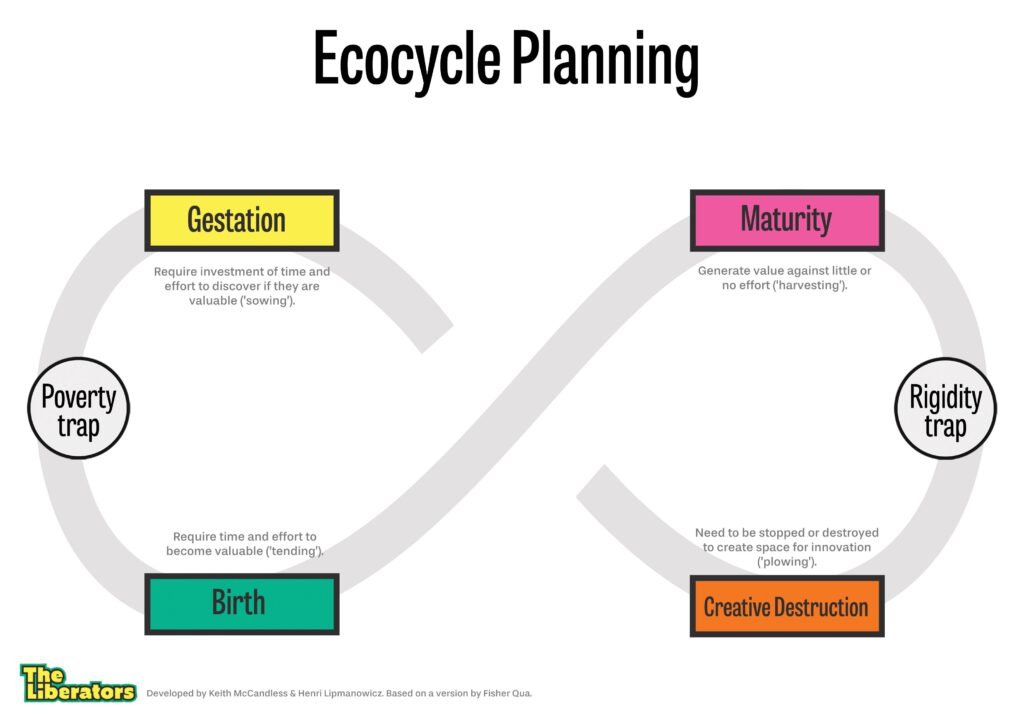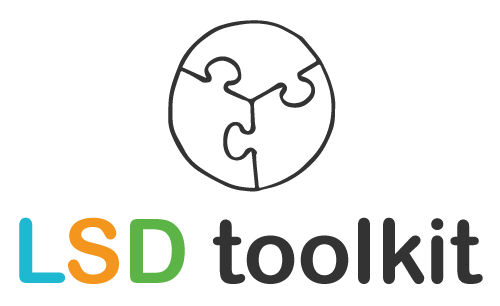Strategy is not necessary at all. There are countless self-managing organizations that do not have an overarching strategy at all. But in most organizations the strategic plan is still sacred. You can use the Liberating Structure Ecocycle planning to give the management sufficient certainty that ‘we are not just doing something randomly’ and at the same time do justice to the unplannable nature of reality .
Group
Always ensure that a group is an honest representation of the entire organization and that all perspectives are represented. In a large organization you do the session with a group of enthusiasts from all parts of the organization. Don’t forget to invite one or more customers.
(The micro-structure Ecocycle planning can not only be used at board level to recalibrate a strategy, but works at every level in the organization.)
Purpose
The purpose of the session is to map the strategic portfolio and discuss and prioritize activities in the four maturity stages: pregnancy, birth, maturity, creative destruction.
Results
Invite the group to formulate concrete actions associated with each phase. Actions that accelerate growth during the birth phase. Actions that extend lifespan or increase efficiency during maturity. Actions to prune dead wood or stop rigid practices during the creative destruction phase. And actions to connect creative people and to be ready for the renewal phase and the ‘birth’ of new ideas.
Preparation
Make sure you have a free space on the floor of at least 3 by 3 meters. ‘Draw’ the Ecocycle planning lemniscate with tape on the floor. The example is shown below (source: The Liberators). Add the four phases and the two ‘traps’ (poverty trap, stiffness trap). Provide enough post-its and sharpies.

Gradient
- Briefly explain the method to the participants. Indicate that it will become clear on its own.
- Have each participant make an overview for themselves of the projects and initiatives his or her people are currently working on (5 minutes)
- Team up, discuss the items, write them separately on post-its and stick them in the right maturity stage (10 minutes)
- Form groups of four and go through the placed items together and move or delete where necessary (15 minutes)
- Have the groups distance themselves and focus on the items they have consensus on (about the maturity stage). Make a list of items we should stop or discontinue development for. Then make a second list of items we should start with or put more energy and resources into.
- Discuss both items plenary and (by consensus) stick the stop items in the stiffness trap and the start items in the poverty trap.
- Swap the groups into new groups of four. Always take an item with which we have to stop (from the stiffness trap) and come up with a first action.
- Do the same for the items in the poverty trap (think of a first action to start or to release more resources for further development
- Discuss the outcome in plenary. Make actions more concrete and do not leave the room without a concrete action list on which there is a clear consensus.
Tips
You will see that the working method sometimes works differently than you intended. This is not bad. The most important thing is the open discussion about what we do and the prioritization.
And if you are supervising this method for the first time, do not start (if possible) with the entire portfolio, but with a simpler project that is more tangible and has less impact on the entire organization.
Another powerful Liberating Structure (under development) is Strategy Knotworking . You can find a clear explanation here .
